Smart TVs are so common it doesn’t feel necessary to add the ‘smart’ to them. You’d have to hunt high and low to find a new TV that doesn’t come with some form of smart capability or features built-in, whether that’s LG’s WebOS, Google’s Android TV that’s used on Sony and Hisense TVs, or Samsung’s Tizen.
Although the majority of these smart TV platforms function in the same way: giving you access to apps, streaming services and smart home functionality, each has its pros and cons. So, for that reason, we’ve put together this guide to the best smart TV platforms available right now – with the very best smart TV models listed at the bottom of this article.
We’ve come a long way from the early days of smart TVs, which were marked by sub-standard performance, non-existent software updates, and a general lack of manufacturer support.
So what smart TV platforms are out there, what do they do, and how different are they from each other?
[Update: Sony’s smart TVs are getting an upgrade with the new addition of the Amazon Alexa Music, Cameras and TV Control app that’s rolling out in an update today. The new app adds a number of Alexa’s features – like the ability to control smart cameras from Ring and find music using their voice. So far the list of supported TVs includes all the Sony 2019 models, most 2018 models, the mid-range models from 2017 (A1E, X940E, X930E, X900E, X850E, X800E) and a few models from 2016 (Z9D, X800D, X750D, X700D).]
Smart TVs platforms: which is which?
In 2019, there are five main smart operating systems: Android TV, webOS, Tizen, Roku TV and SmartCast that are used by Sony, LG, Samsung, TCL and Vizio, respectively. In the UK, you’ll find that Philips also uses Android while Panasonic uses its own proprietary system called MyHomeScreen.
The vast majority of TVs use one of the operating systems listed above – but not all TVs. At lower price points, you probably won’t find any of the above as most TV manufacturers offer a narrow proprietary service instead. These will vary between manufacturers, however, by and large, they’re not as good as the ones listed above for the sheer reason that they aren’t updated as frequently.
When in doubt, try to buy one a TV with one of the above.
That said, if you’re completely undecided on which smart TV to buy, it’s worth considering the value of each of these smart systems – which we’ll list below.
(Scale: Awful, Bad, OK, Good, Better, Best)
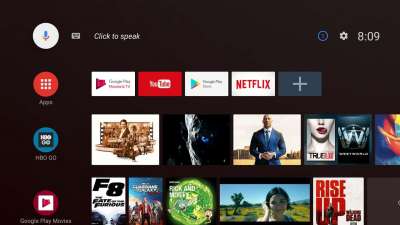
Android TV (found on 2019 Sony 4K and OLED TVs)
Setup: OK | Ease of use: Good | Speed: OK | Number of apps: Better | Universal search: Better
- Pros: Recommended content row. Clean layout.
- Cons: Most builds are very buggy and prone to crashing.
Android TV is the nearest the smart TV universe has to a standardized operating system, but there are still variations between brand executions.
Sony has the most comprehensive Google solution. For UK viewers, it has rather cleverly layered a YouView program guide platform on top, deftly addressing one of Android TV’s big weaknesses – catch-up TV provision. This YouView app ensures that all the main catch-up services are provided, and accessible via a roll-back 7-day EPG.
Other supporters of Android TV are Philips (via maker TP Vision) and in the US, Sharp and Hisense. It’s also available on the Nvidia Shield streaming device.
While other TV platforms make a virtue of their minimalism, Android stacks the screen with various layers of content: There’s also a row of specific Sony selected content, followed by apps for Netflix, Amazon Video, links to the Google Play Store, Google Play Music, Google Play Movies and TV, YouTube and so on.
Owners of Android phones/tablets can use their device to control Android TVs via Sony’s TV SideView app, and Google Assistant continues to get more and more useful with its own Android TV integration.
Android TV devices also have Chromecast built-in, which simplifies streaming from mobile Android devices (iOS users can download the AirBuddy app to Google Cast). Controllers from Logitech and Razer also promise gaming without needing a console.
There is a caveat though. In our experience, Android is the least stable of the various smart platforms, with Sony TVs exhibiting more than their fair share of failures – it’s not unusual to be notified that various aspects of the Android platform have stopped working, and some of these messages are completely inscrutable (usually the best option is to simply restart the TV).
To be fair to Google, this is becoming less of an issue as successive Android TV updates roll out – the latest incarnation is particularly slick on the Nvidia Shield, for example – but there’s still room for improvement.
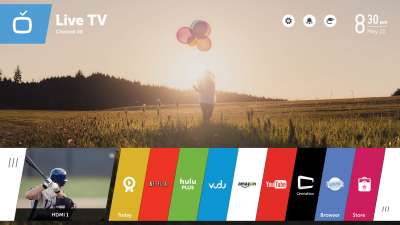
WebOS (found on 2019 LG OLED, Nano Cell and some UHD TVs)
Setup: OK | Ease of use: Good | Speed: Better | Number of apps: Bad | Universal search: OK
- Pros: Alexa and Google Assistant integration. Fast to navigate.
- Cons: The least robust in terms of apps of all the smart TV platforms.
LG rewrote the rulebook for smart TV platforms with its webOS, starting the trend for minimal, simplified user interfaces back in 2014.
Since then it’s been gradually refining its offering, leading us to the all-new WebOS 4.5 that’s going to make its debut in 2019.
The UI, which is still built around a Launch Bar for apps, inputs and features, remains tidy and customizable this year, plus you can change the running order to best suit how you use the set. If you like to Miracast images from your smartphone, grab the Screen Share app with LG’s cursor-based Magic Remote and move up further up the pecking order.
App support is excellent. Netflix streams in 4K with both HDR and Dolby Vision, as well as Dolby Atmos audio when available. There’s also Amazon with UHD HDR and YouTube in 4K. Other options include Now TV, Sky Store, Wuaki.TV, plus all the main channel catch-up services.
As we’ve seen on earlier webOS builds, these streaming apps remain open and live, even when you navigate away from them. This means you can pause Star Trek Discovery, browse the TV listings for The Walking Dead, and then return to the action.
Other cool features recently added to the platform include 360-degree video playback (from 360-degree videos on YouTube), support for both Google Assistant and Alexa, and an OLED still image gallery. LG TVs also have Freeview Play in the UK, which means a full larder of catch-up television.
For US viewers, there’s Netflix, Amazon, YouTube and Google Play TV and Movies, as well as Hulu, VUDU, MLB.TV, and FandangoNow.
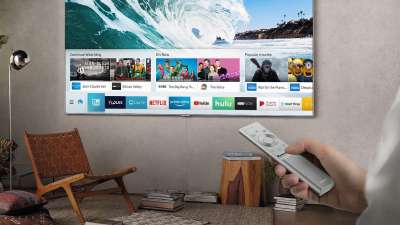
Tizen (found on Samsung 2019 QLED and NU-Series TVs)
Setup: Good | Ease of use: Good | Speed: Better | Number of apps: Bad | Universal search: Bad
- Pros: TV Plus offers free channels. Fast to navigate.
- Cons: Universal search can be hit or miss.
Samsung is another brand keen to keep things simple – its Tizen OS clearly owes much to LG’s webOS interface, in so much as it consists of icons, apps and shortcuts all accessible via icons held a horizontal strip across the bottom of the screen. A dynamically changing ‘Recent’ box in the far-left corner cycles between recently used apps and TV channels.
But it’s not overly intelligent as it stands right now, but that could change in the future when Samsung integrates its TV AI into Tizen.
For now, we like the fact that on-screen icons can be changed: a sense of identity is welcome when it comes to some AV inputs and key apps you use everyday. The OS cuts down on clutter, although this sometimes works against navigation – there are plenty of occasions when it’s necessary to go hunting for a specific app. Thankfully that’s made easier by a Smart Hub multimedia page that divvies up content from apps and from your own USB sticks/home network.
On some of the higher-end Samsung TVs, you’ll also get Bixby built-in as well as Samsung SmartThings that allows your TV to act as the center of your connected home.
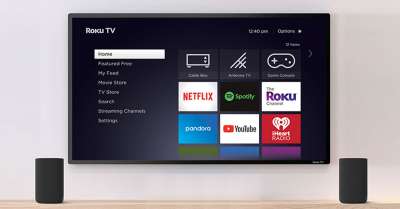
Roku TV (found on 2019 TCL and Hisense TVs)
Setup: OK | Ease of use: Better | Speed: Better | Number of apps: Good | Universal search: Best
- Pros: Best universal search. Very easy to use.
- Cons: Interface feels a bit plain in 2019.
Despite Android TV and all the proprietary portals available, there’s still room for other connected smart offerings. In Europe, Vestel has its own stripped back smart platform, which is used for TV companies it manufactures for, including Toshiba and JVC. It’s unfancy but does the basics.
In the US, TV maker Element now offers a screen with Amazon’s Fire TV OS built in.
But perhaps the most interesting second-division smart OS is Roku TV.
Announced back in 2014 for TCL TVs, Roku TV has found support with low-cost US TV suppliers. Today, you can find Roku TV on quite a few Haier, Hisense, Insignia, Sharp and TCL TV models.
As a platform, Roku TV borrows the interface and feature set from the company’s popular media streamers, like the Roku Streaming Stick.
What that means is that you’ll find a universal search function able to scan over 30 different apps like Netflix, Google Play TV and Movies, Amazon, VUDU and more to find you the lowest price on the TV show or movie you want to watch, as well as around 4,500 channels of content to watch.
Add to that some neat features like a dedicated app that helps you keep track of upcoming movies and TV shows via the My Feed section, and a private listening mode (via headphones that plug into the remote) when you want to watch TV without disturbing the whole house.
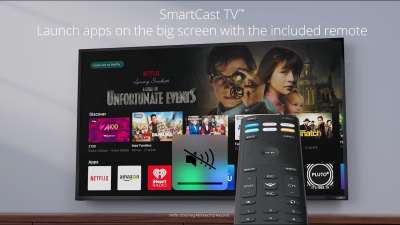
SmartCast (found on 2019 Vizio TVs)
Setup: OK | Ease of use: OK | Speed: Bad | Number of apps: Good | Universal search: OK
- Pros: Has Google Chromecast built-in.
- Cons: Slower than most other TV operating systems.
SmartCast, on paper, is a great idea. It’s all the fun extras of the Android TV platform – including the ability to Cast content to your screen – with a more logical layout.
When you turn on a SmartCast TV be prepared to see three rows – one featured row that has huge marquee images to point you to specific shows or movies; one row for recommended content and one row for all your apps.
If you want to drill down into specific content categories or settings, you can move to one of the other tabs (there’s a tab for movies, TV shows, Support and Extras) or go to the top right of the screen to perform a search.
Unfortunately, while SmartCast provides a lot of versatility in what you can stream, it’s also one of the slower smart platforms and can misbehave on occasion.
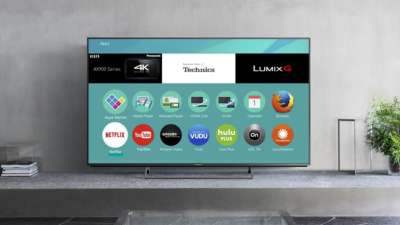
MyHomeScreen (found on 2019 Panasonic TVs)
Setup: OK | Ease of use: Good | Speed: Better | Number of apps: OK | Universal search: OK
- Pros: Fast and responsive.
- Cons: A bit plain.
If you live in the UK, Panasonic’s My Home Screen 2.0 is one of the most customizable smart TV platforms around. Built on the open-source code of Mozilla’s Firefox TV OS, Panasonic’s My Home Screen 2.0 smart TV interface combines an intuitive minimalism with extensive customization options.
The platform looks simple but has some inspired functionality: the home screen launches with three buttons (Live TV, Apps and Devices), but you can pin more as required, perhaps for a favorite streaming service, or a specific input. There are now also folders for multiple users, while a My App button on the remote can be customised for faster access to favourite content. A revamped Media Player supports 4K HDR10 and HLG HDR, meanwhile.
App provision on Panasonic TVs is good too. Netflix streams in 4K with HDR, and Amazon Video and YouTube also offer 4K support. Catch-up TV service support is integrated through the provision of Freeview Play. This includes iPlayer, ITVHub, Demand 5 and All4, and usability is great across the board.
The OS is extremely convenient to live with, yet powerful enough to cater for a variety of different users, be they family members who just want their favorite channels pinned to the home screen, or TV enthusiasts keen to dive quickly between multiple sources.
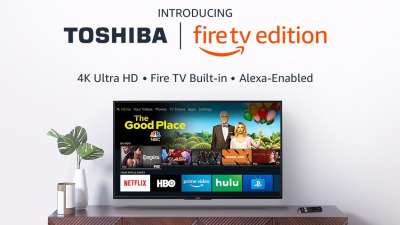
Amazon Fire TV (found on some Toshiba and Insignia TVs)
Setup: Good | Ease of use: Good | Speed: OK | Number of apps: OK | Universal search: OK
- Pros: Directly tied to Amazon Video
- Cons: Insignia and Toshiba TVs aren’t great
One of the lesser-known operating systems is Amazon Fire TV that comes installed on some TVs from Toshiba and Insignia. It’s more or less the same operating system that you’d find on Amazon’s Fire TV streaming dongle, but it’s conveniently built right into the TV – no dongle necessary.
The big problem here actually isn’t the operating system – which, by all logical measurements, is totally fine. It’s that the TV manufacturers Amazon has partnered with – Toshiba and Insignia – aren’t great, and usually put out the cheapest TVs in the American market. Some of these TVs are OK, but many (including the ones that use the Amazon Fire TV platform) aren’t.
That’s something Toshiba is hoping to fix with it’s upcoming Amazon Fire TV Edition with Dolby Vision TV that was announced in June of 2019, but we’ll need to wait for review samples to know for sure how the latest software stacks up.
If you’re interested in the speed and versatility of Amazon’s smart TV platform, we recommend buying an Amazon Fire TV Stick 4K instead.
- TV stands: finding the best TV stand to suit your living room cinema needs
What’s the best smart TVs?
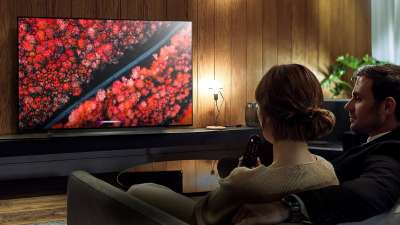
The LG C9 boasts the latest iteration of webOS and while this game changing platform remains largely the same, there have been a few tweaks.
For a start there’s now a second tier on the launcher bar that’s very reminiscent of the one found on Samsung’s Tizen system. It’s rather ironic that LG should take inspiration from Samsung, especially when you consider that Tizen copied webOS in the first place, however the second tier is a useful feature, making it quicker to access content and adding an AI Preview that makes recommendations based on your viewing habits. There’s also a new Intelligent Edit feature that lists your apps based on how often you use them.
That’s very handy because the C9 has a lot of apps; not to mention a comprehensive selection of streaming services that includes Netflix, Amazon, YouTube, Now TV, Rakuten, and all the UK TV catch-up services.
The AI-enhanced recommendation feature monitors and analyses your viewing habits based not only on content but also the time of day. It will then make recommendations according its analysis, although there’s the option to turn this feature off if it gets annoying.
There’s a new Home Dashboard that collates all connected mobile, input and home IoT devices into a single hub. You can monitor and control just about any connected device in your smart home, and LG will be adding support for Homekit later this year.
LG’s ThinQ open AI platform already includes Google Assistant, and the company plans to add Amazon Alexa via a future firmware update. You can access Google by pressing the mic button on the remote, and then voice control your C9 or simply use it as a smart assistant.
Other new features include the ability to setup your C9 using an LG smartphone, and the ability to auto-detect connected HDMI devices. There’s also a mini-browser, a new TV channel banner, and an expanded Gallery mode with world famous travel attractions seasonally curated by TripAdvisor.
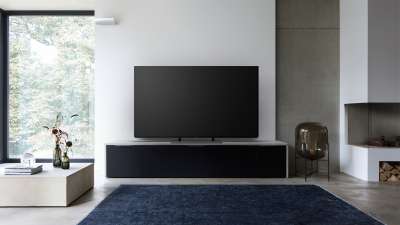
Panasonic’s My Home Screen smart platform is decidedly simple compared to much of the competition, but that’s not necessarily a bad thing. Currently on its third generation, it remains largely the same as the Firefox OS on which it was originally based.
When you press the Home button on the remote, you get a choice of three options: Live TV, Apps, and Devices. This simplicity is the platform’s greatest strength, making it easy to navigate and find things by helpfully storing all the apps in single location; you can also pin your favorite apps to the home page for quicker access.
Since the smart platform is relatively simple, it doesn’t require a vast amount of processing power to operate, which makes it responsive, robust, and free from crashes. My Home Screen isn’t fragmented like some platforms, nor does it bombard you with recommendations – it simply delivers all the streaming and catch-up services you need.
Thanks to Freeview Play, a comprehensive list of catch-up services are included, covering BBC iPlayer, ITVhub, All4, My5, BBC News & Sport and UK Play. The iPlayer app supports 4K and HLG (Hybrid Log-Gamma – the broadcast version of HDR), both of which the BBC trialled during the World Cup.
There’s also Netflix, Amazon and YouTube, all of which support 4K and HDR, along with services like Rakuten and Chili Cinema. In fact the only major streaming service missing is NOW TV.
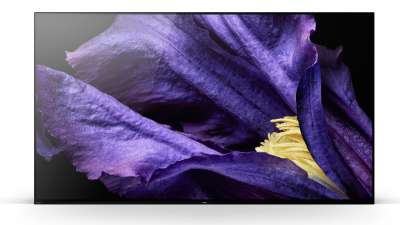
The A9F is unquestionably Sony’s best OLED offering to date, and arguably a strong contender for high-end screen of the year. When it comes to image quality and audio performance it’s deliciously impressive. While we experienced some minor issues with Android Oreo, the UX is now logical and inclusive. It no longer feels like you’re wrestling with an octopus.
Oreo introduces plenty of nice new features, including a recently watched content rail, curated recommendations and a favorite channel listing. Thankfully, the UI is also significantly faster than previous Android TV OS implementations. It’s a massive upgrade all round.
If you can live with the slightly idiosyncratic design, and afford the asking price, it’s a glorious UHD display.
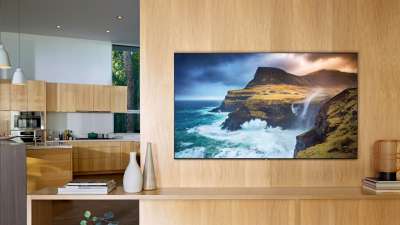
While it’s not Samsung’s flagship TV for 2019, the Samsung Q70R is the best bang for your buck when looking for a Eden smart TV.
For starters there’s now compatibility with Samsung’s SmartThings platform, which provides an on-screen hub for monitoring and even controlling other smart devices (fridges, washing machines, lights etc) on your network, and iTunes/AirPlay 2. The latter is great if you’re an iOS/Mac user, while the former allows you to dabble in Samsung’s IoT platform.
There’s also much better integration of the TV listings and live broadcasting into the TV’s content searching features: there are now hour-by-hour show recommendations, for instance, as well as TV shows getting much more prominence in the content browsing menus.
Samsung has delivered enhanced interactivity with your smartphones and tablets too, as well as some seriously cool new gaming related features.
Overall, a slick, easy to use and helpfully customizable interface belies the impressive sophistication and comprehensiveness of Samsung’s latest smart TV engine.
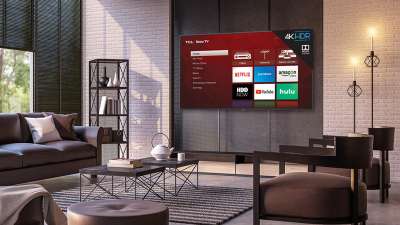
Once you get this TCL TV up and running, you’ll be met with the familiar veneer of Roku TV – an egalitarian operating system that handily retains its top spot as (arguably) the best operating system year after year. It’s intuitive to use, if a bit boring, and its lack of ties to a particular streaming platform allow it to point you to all the places content can be found without bias.
That last bit is important, especially if you’ve ever used an Apple TV or Amazon Fire TV, both of which would much rather have you stream from their ancillary streaming services over any of the third-party ones. Because Roku doesn’t have ties to a major streaming service – other than a vague deal to include FandangoNow on the home screen of the OS – it doesn’t push you any direction you don’t want to go and happily supports everything from Netflix, Hulu, Sling TV and Amazon, to lesser-known channels like Pluto.tv, tubi, Crackle and others.
That’s to say nothing of Roku’s own streaming service that it launched at the end of last year, which provides its own collection of entirely free movies that change in and out every few months. Most aren’t anything to write home about, but you do get the occasional gem in there.
While it’d be nice to see the inclusion of artificial intelligence and personal assistants on Roku TV – similar to what LG is doing with webOS and Samsung has done with Tizen and SmartThings – all things considered, this is still one of the best TV operating systems and a fantastic TV overall.
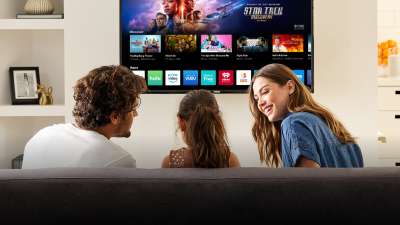
The Vizio P-Series Quantum X is a smart TV, but that goes beyond simply offering a smart platform for streaming: This is one of the first TVs from the California-based TV manufacturer to offer Apple AirPlay 2 functionality, opening it up to the entire Apple ecosystem. That’s a game-changer if you’re an iPhone user.
Beyond AirPlay, the Quantum X also has direct access to Netflix, Amazon Prime Video, Hulu, and more, all from the home screen, and while the overall selection of apps isn’t massive, and there’s no real app marketplace to get more, most of the big ones are there, plus you can cast with Vizio’s SmartCast platform, which is handy.
We still find SmartCast to be one of the least appealing smart platforms out there, but we can’t knock the Vizio P-Series Quantum X – it’s one of this year’s best TVs.
- Read our best 4k tvs articles
